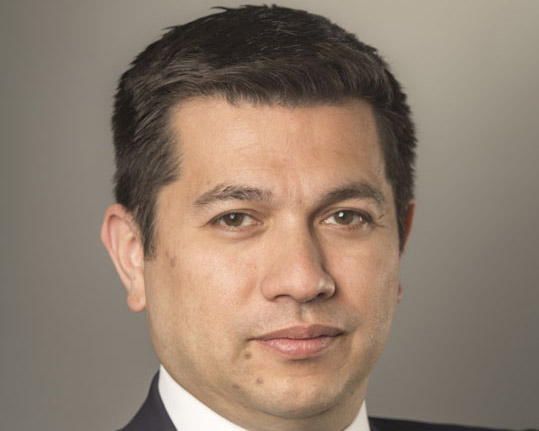With the impact of the war in Ukraine reverberating across global markets, a football World Cup that broke records for pollution, and a long-awaited UN biodiversity conference, 2022 was something of a reality check for the environmental, social and governance industry. What will 2023 look like?
Euromoney asks the experts.
Disclosure
Last year, 2022, saw a great deal of synchronised effort by regulators to enforce ESG disclosure requirements; this year will force financial services companies to be more careful about how they categorize transactions.
In Europe, the Sustainable Finance Disclosure Regulation (SFDR) Level 2 – which requires fund management companies to comply with fund prospectus, website and sustainability risk disclosure requirements – came into effect on January 1. In the UK, the Financial Conduct Authority’s ESG rules have also came into force, with different deadlines for asset managers according to the size of their assets under management.
In the US, the Securities Exchange Commission (SEC) has been rushing to finalise its proposed climate reporting rules, while its Canadian counterpart has proposed a prudential framework that recognizes the impact of climate change on managing risk, along with mandatory climate-related financial disclosures aligned with the Task Force on Climate-Related Financial Disclosures (TCFD) framework.
This year should see further standardization of disclosure frameworks, with the International Sustainability Standards Board (ISSB) predicting several key developments.
“We will issue our first two final sustainability disclosure standards – one covering general requirements and one covering climate-related disclosures – this year,” says ISSB chair Emmanuel Faber, “once we’ve completed our discussions about refinements to the draft standards in response to feedback on our public consultation.
“The standards will deliver a global baseline and provide investors with crucial information and give companies clarity on how to report to the capital markets on sustainability matters.”
The ISSB’s rules are welcome support for banks eager to get as much data as they can from their corporate clients to meet their own reporting requirements and to get a better forward-looking view of the transition pathways of their most-polluting clients.
“We will also consult on our future priorities this year and urge everybody to engage with the consultation once published as market input is critical for our work,” says Faber.
Biodiversity
Beyond carbon emissions, experts expect nature-related financial disclosure to become more mainstream this year.
Noeleen Cowley, KPMG’s head of financial services ESG, recalls the focus on disclosure at COP15, the biodiversity summit that took place in December 2022, and in particular the draft framework of the Taskforce on Nature-related Financial Disclosures (TNFD), the latest iteration of which was released in November.
“TNFD was the talk of the town at COP15,” she says. “While many will be disappointed that the word ‘mandatory’ does not feature, the text does provide an unambiguous message to firms to prepare to disclose their risks, dependencies and impacts on nature – and that stronger requirements from individual jurisdictions are coming down the line.”
We have to work together as an industry, while staying aligned to the objectives we have for ourselves, and that includes taking into account the needs of local communities in our key regions
Alexi Chan, HSBC

The adrenaline rush from COP15 is moving biodiversity further up the list of priorities in the financial industry. But not everyone believes 2023 will see particularly fast-paced progress as capital flows fail to reach the projects that need them the most.
“Things tend to move quickly at the top level” says Victoria Leggett, head of impact investing at Union Bancaire Privée (UBP). “We’re seeing biodiversity financing come up more often on the capital markets, but it doesn’t seem to be filtering through to small projects. Banks look at their loan books and want to include biodiversity as part of a favourable lending environment but, at grassroots, access to capital is sometimes an issue.”
Still, the outcomes from COP15 are impressive.
“The biggest win is the 30×30 target in the Kunming-Montreal Global Biodiversity Framework (GBF),” says Leggett, referring to the plan for governments to label 30% of the planet’s area as ‘protected’ by 2030 enshrined in the GBF and announced at the end of COP15.
There is a recognition that, like climate, biodiversity also has a real and tangible impact on the financial survival of corporates, and financiers will be eager to they have grip on the issue for their clients. For now, it has its work cut out, though.
“The financial industry is a long way from being able to discuss this factor in a material, quantifiable way,” says Luke Sussams, Jefferies’ EMEA head of ESG and sustainable finance.
Phase-downs
All eyes will be on banks’ ability to demonstrate a clear plan to phase out brown-energy funding from their loan books by expecting more from clients’ transition pathways. But the big takeaway from 2022 is that this transition will be done slowly – or, as bankers prefer to say, ‘pragmatically’.
“The war [in Ukraine] complicated the transition and changed people’s perspectives on energy,” says Sussams. “We saw a short-term return of the consumption of certain fossil fuels, but it also brought nuclear back to the table. As long as the war continues, those complications will persist.”
Several banks ended the year with updated energy policies, indicating a reduced appetite for new fossil fuel-exploration projects. HSBC, for example, said it would not provide new finance or new advisory services to any client specifically for new oil and gas projects or for infrastructure whose primary use is in conjunction with new oil and gas fields.
“Our policy recognises that energy companies will be at the heart of the transition to net zero and draws on the International Energy Agency (IEA)’s analysis that an orderly transition requires continued investments in existing oil and gas fields, keeping financing around 2020 levels for the rest of this decade,” says Alexi Chan, HSBC’s head of global banking sustainability.
Policies like this are a reminder that an abrupt end to fossil-fuel financing is not on the table. And the banking sector’s sluggish break-up with fossil fuels will also depend on how the anti-ESG trend unfolds in the US.
States such as Texas are putting pressure on financial services companies to rein in hostility to fossil fuels or risk being cut out of state business or access to funds.
“It is a huge challenge, and the impacts are very real,” one senior sustainability banker tells Euromoney. “At state level, they are employing legal mechanisms that will prevent us from making decisions to exit hard-to-abate clients, or even just include sustainability in our decision-making.”
Just transition
At COP27, the idea of securing a just transition to protect emerging economies while funding adaptation strategies across the developing world resonated well with participants. And if the public sector is focusing its attention on developing markets, so too should the banking sector.
The multiplication of Just Energy Transition Partnerships (JETPs) indicates that there is an appetite for financing structures where transition pathways support the expansion of energy supply and demand in developing regions. Some banks expect much more activity in this area this year.
“GFANZ [Glasgow Financial Alliance for Net Zero] is supporting the JETPs signed with Vietnam and Indonesia, and we look forward to working with our partners to support the transition to net zero,” says HSBC’s Chan.
Social finance is something that banks tend to talk about less
Fiona Melrose, UniCredit

For energy bankers, the ‘just transition’ theme has been particularly important as they grapple with increased scrutiny from civil society of their fossil-fuel lending.
“We have to work together as an industry, while staying aligned to the objectives we have for ourselves,” says Chan, “and that includes taking into account the needs of local communities in our key regions.”
The IEA reckons that clean-energy investment in emerging and developing economies must increase to over $1 trillion a year by 2030 – and $4 trillion worldwide – if the world is to reach net-zero emissions by 2050.
The JETPs show that a convergence between public-sector transition agendas and private-sector financing is set to be a key trend in 2023.
Ultimately, the ambition to deliver a just transition across the globe comes back to principles of social justice and equity. In terms of lending volumes, banks haven’t always been able to demonstrate material commitments to social impact at the scale of their environmental impact strategies.
“Social finance is something that banks tend to talk about less,” says Fiona Melrose, head of strategy and ESG at UniCredit.
But for the Italian bank, 2023 will be a year to focus more on the S of ESG.
Melrose adds: “For our social lending activities, we set a growth target of €10 billion in volume over the next three years, up from a previous €1 billion target.”
Regional industry focus
Bank appetite for JETPs also reflects changing inter-regional dynamics. If Europe is looking to secure trade deals with key emerging markets in southeast Asia and in the Middle East and North Africa, then it needs to get ahead of the curve.
Such strategic relationships will become more important as the bloc starts to feel pressure to protect itself from the US Inflation Reduction Act (IRA), which includes hundreds of billions of dollars of climate-change investment.
“A key area we’ll be looking at is green protectionism,” says Jefferies’ Sussams. “It will be interesting whether the EU will be able to implement an industrial strategy in response to the IRA, and to see the degree to which EU companies will be awarded exemptions.”
Green protectionism – and the broader idea of deglobalization – is still an unpopular concept amongst free trade-loving market experts, while others might argue that Europe is not the nimblest of political regions. Investors will be sceptical of Europe being able to respond quickly to IRA and will remain bullish on the US.
Meanwhile, banks will be expecting more from their heavy-industry clients when it comes to transition pathways, while simultaneously keeping an eye out for new opportunities within the hard-to-abate sectors. This will likely put carbon capture and storage (CCS) technologies at the top of the agenda.
In its energy outlook for 2023, ING writes: “Under the urgency of decarbonization, CCS is being extended to other sectors such as hydrogen, power, cement, iron and steel. This trend is set to continue among projects that are going to be announced in 2023.”





